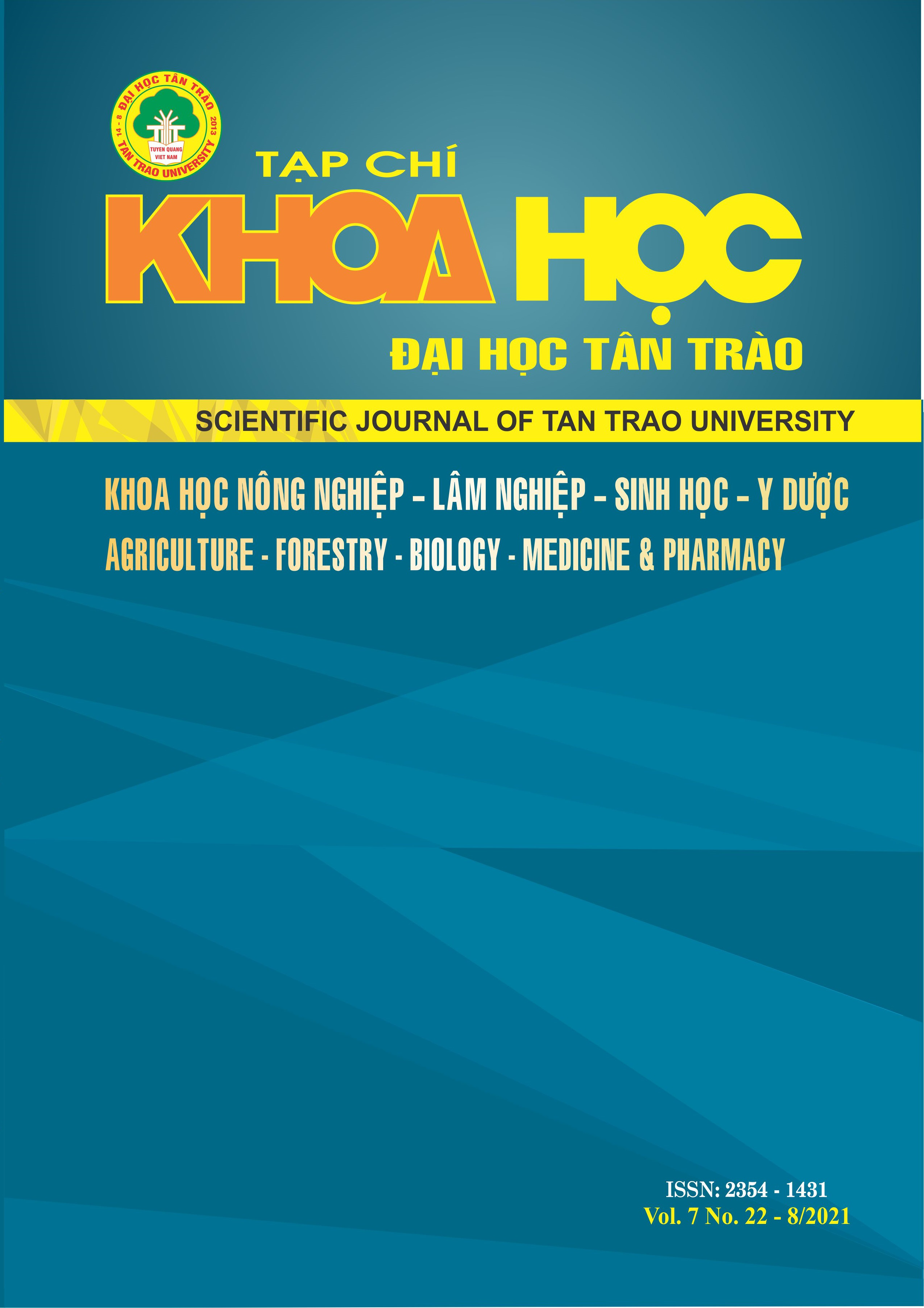NGHIÊN CỨU TUYỂN CHỌN CHỦNG VI SINH VẬT PHÂN GIẢI CHẤT HỮU CƠ PHÁT SINH TRONG QUÁ TRÌNH SẢN XUẤT SỢI TỪ CÂY GAI XANH (Boehmeria nivea tenacissima (L.) Gaud.)
DOI:
https://doi.org/10.51453/2354-1431/2021/569Từ khóa:
Cây gai xanh (Rami); Chế phẩm sinh há»c; Phân giải xenlulozaTóm tắt
Trong quá trình chuyển đổi cơ cấu cây trồng, cây gai nổi lên như một đối tượng sáng giá để nhiều địa phương lựa chọn thay cho các cây trồng khác kém hiệu quả. Diện tích cây gai xanh lấy sợi của Việt Nam đã trên 1000 ha (2018). Sau khi lấy vỏ làm sợi, một lượng lớn bã thải thân lá cây gai được thải ra ngoài môi trường. Các chất thải hữu cơ sau một thời gian để ngoài tự nhiên nó bị phân hủy sinh học gây ra mùi hôi, thối môi trường xung quanh. Việc tạo ra một chế phẩm vi sinh chuyên để xử lý bã thải cây gai làm sạch môi trường là cần thiết. Để giải quyết vấn đề đó, đề tài đã nghiên cứu thu thập, phân lập và tuyển chọn được những chủng vi sinh vật có khả năng phân giải xenluloza và lignin thành phần chính trong thân lá cây gai. Kết quả đã chọn được 4 chủng vi sinh vật có hoạt tính phân giải xenluloza và lignin cao để sản xuất chế phẩm sinh học phân giải bã thải cây gai xanh và có khả năng tổ hợp tốt là các chủng xạ khuẩn RR04, BG05, BG08, vi khuẩn RR05. Nghiên cứu cũng đã lựa chọn được môi trường lên men thích hợp nhất là MT2 để các chủng vi sinh vật có được hoạt tính sinh học xử lý bã thải cây gai tốt nhất.
Tải xuống
Tài liệu tham khảo
[1] Chinh, T. T., Chinh, T. K., Tam, N. T., Thuc, H. T. (2012). Technology of planting, caring, collecting and preserving products from rami. Agriculture Publishing House.
[2] The Ministry of Science and Technology announced. (2011). National standard, TCVN 8741:2011. Agricultural microbiology - Short - term preservation method.
[3] Chinh, L. H. (2001). Medical Microbiology. Medical Publisher.
[4] Connie, R., Mahon, M. S., Giorge Manuselis, J. R. (1995). Diagnostic Microbiology. WB Saunder Company.
[5] Howard, L., Ypdyke, Elaine, L., James, O. (1970). Mycotic, and parasitic infections, 5th. Bodily. Diagnostic Procudures for Bacterial, American Public Health Association, Inc., New York.
[6] Williams and Wilkins Co. (1986). Bergey- Manual of sustematic bacteriology.
[7] Son La province. (2018). Prospects for the development of rami in Moc Chau district. http://www.mocchau.sonla.gov.vn/.../4354.
[8] Young agriculture. (2018). Technology of growing green rami. http://www. nongnghieptre.com
[9] Agriculture – Forestry – Fisheries. (2018). Selected green rami brochure. Agriculture. https://tailieu.vn.
[10] Agricultural extension Cultivation. (2018). Quang Ngai: Experimental planting of green rami - Agriculture Newspaper. https://nongnghiep.vn.
[11] Scientific database system. (2018). Research and development of green rami. http://elib.dostquangtri.gov.vn.
Tải xuống
Đã Xuất bản
Cách trích dẫn
Số
Chuyên mục
Giấy phép

Tác phẩm này được cấp phép theo Giấy phép Quốc tế Creative Commons Attribution-ShareAlike 4.0 .
Bài báo được xuất bản ở Tạp chí Khoa học Đại học Tân Trào được cấp phép theo giấy phép Ghi công - Chia sẻ tương tự 4.0 Quốc tế (CC BY-SA). Theo đó, các tác giả khác có thể sao chép, chuyển đổi hay phân phối lại các bài báo này với mục đích hợp pháp trên mọi phương tiện, với điều kiện họ trích dẫn tác giả, Tạp chí Khoa học Đại học Tân Trào và đường link đến bản quyền; nêu rõ các thay đổi đã thực hiện và các nghiên cứu đăng lại được tiến hành theo cùng một bản quyền.
Bản quyền bài báo thuộc về các tác giả, không hạn chế số lượng. Tạp chí Khoa học Tân Trào được cấp giấy phép không độc quyền để xuất bản bài báo với tư cách nhà xuất bản nguồn, kèm theo quyền thương mại để in các bài báo cung cấp cho các thư viện và cá nhân.
Mặc dù các điều khoản của giấy phép CC BY-SA không dành cho các tác giả (với tư cách là người giữ bản quyền của bài báo, họ không bị hạn chế về quyền hạn), khi gửi bài tới Tạp chí Khoa học Đại học Tân Trào, tác giả cần đáp ứng quyền của độc giả, và cần cấp quyền cho bên thứ 3 sử dụng bài báo của họ trong phạm vi của giấy phép.


